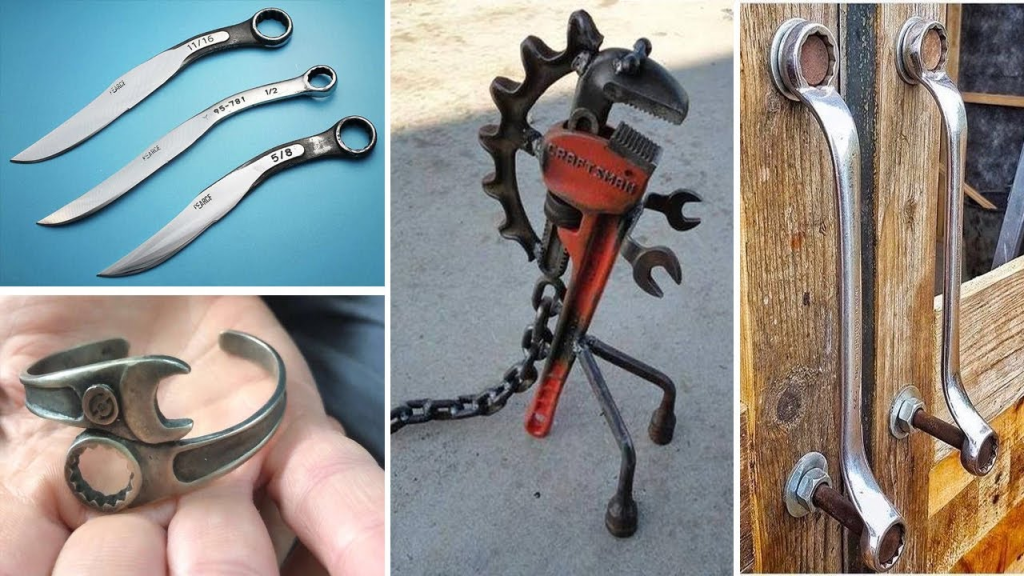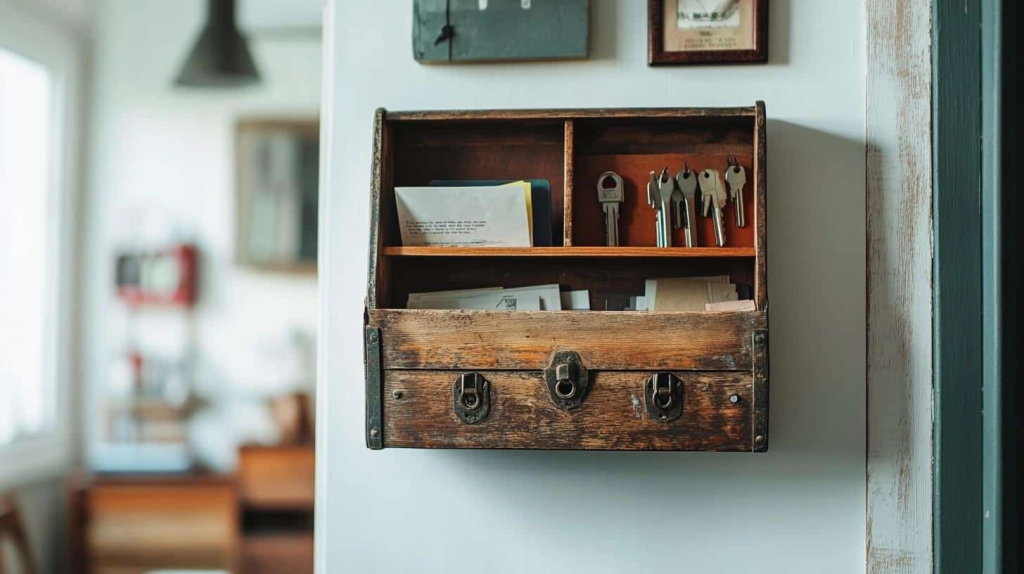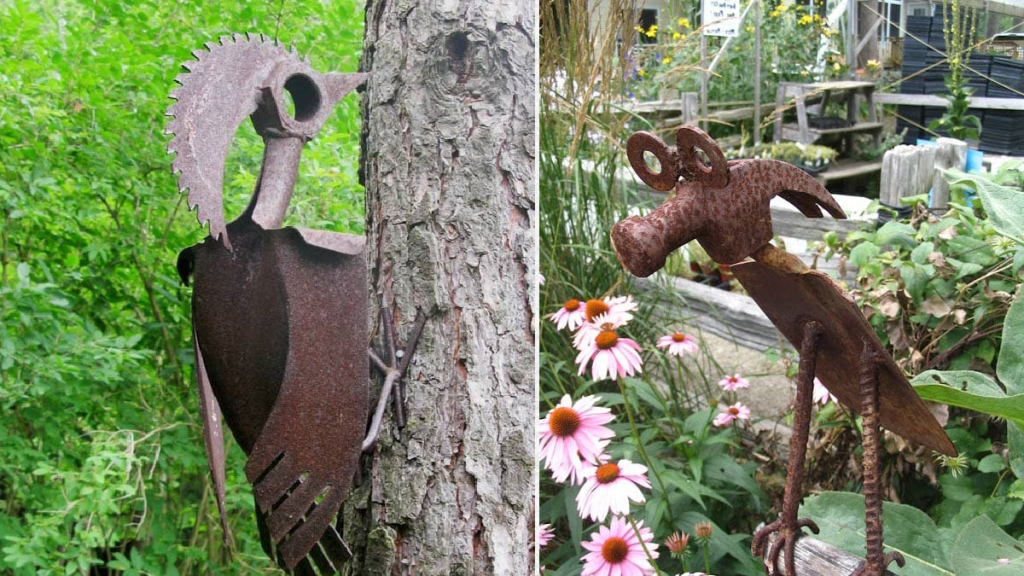Your dusty toolbox still hides treasure. With old tool upcycling, you turn chipped hammers and worn-out wrenches into wall art, planters, or storage hooks that earn fresh life. This hands-on hobby keeps metal scraps out of landfills while giving your home a touch of workshop charm.
By incorporating sustainable DIY projects into your weekend routine, you swap throwaway culture for personal craftsmanship, cutting demand for virgin materials in the process. We’ll walk through creative repurposing ideas that marry nostalgia with everyday function so each retired tool tells a new story in your space.
Why Upcycle Old Tools?

Old chisels and planes don’t need the trash heap. You can turn them into coat hooks or planters giving them a second life. First, bulking up DIY projects with reclaimed steel slashes purchase costs, which is a leading benefit of upcycling.
Next, giving tired metal a second act keeps scrap out of landfills and avoids the energy drain of new manufacturing. This is the core of eco-friendly repurposing. Timeless maker marks stamped into the handles stay on display, preserving craftsmanship from another era.
Also, finishing a wrench-to-rack conversion sparks genuine pride each time guests notice the handiwork, all while adding sustainable home décor that stands apart from store-bought replicas.
Inspiring Design Ideas for Antique Tool Upcycling
Grab that dented wrench from the bottom drawer. Heat, bend, and bolt it to a plank to build sturdy coat or key hooks. Just remember gloves and goggles while the metal is hot.

Saw blades with worn teeth become round canvases. A quick sanding and coat of primer lets you paint wildlife scenes or stencil house numbers for instant wall art that sparks conversation.
Old carpentry hammers shine too: mount the wooden handles to a reclaimed board so the heads jut out as ready-made pegs for jackets.
Each idea nails vintage tool repurposing, and invites weekend-ready antique tool art projects that keep rusty history alive.
Essential Techniques: Cleaning and Restoring Old Tools
Old hand planes and wrenches deserve a second life. First, soak the metal overnight in white vinegar with a spoon of salt.

Scrub with a nylon brush the next morning, then dip it in baking-soda water to stop the acid. Dry completely.
Coat bare steel with paste wax or a light machine oil to block flash rust. Handles? Wipe grime with mineral spirits, sand lightly, then feed the grain three times with boiled linseed oil, waiting a day between coats.
Now sharpen edges and store tools in a dry cabinet. That’s restoring antique tools done right, pairing proven rust removal methods with simple tool refinishing techniques for years of safe use and fresh looks.
Selecting the Right Materials and Finishes
Grab a low-VOC milk or chalk paint for color. It bonds to both wood and metal and cleans up with water, not harsh solvents.

Found On Amazon
Seal wooden handles with pure tung or boiled linseed oil. These are plant-based coats that cure hard, resist water, and stand up to daily knocks as well as many synthetics.
For the steel head, wipe on oil, then brush a water-based polyurethane to lock out rust while adding scratch protection. These eco-friendly finishes team up with epoxy or polyurethane glues to give you durable DIY materials that won’t crumble in the shed.
DIY Projects: Transforming Old Tools into Functional Home Items
Got a hand drill gathering dust? Fit a simple lamp kit through the chuck, add an LED bulb, and that vintage tool becomes an industrial desk lamp that still swivels like it once bored holes. An old wooden toolbox mounts sideways with two L-brackets to serve as a floating shelf.

Slip in small planters or books for quick, rustic storage. Heat an antique wrench with a propane torch, bend it into a J shape in a vise, drill pilot holes, and you’ve forged a sturdy wall hook. Remember gloves and goggles for this metalwork. These DIY tool transformations deliver functional home decor ideas through creative tool reuse.
Incorporating Upcycled Tools into Home and Garden Décor
Broken hand tools still have plenty to offer. Paint wooden screwdriver handles, write Basil or Mint down the shaft, then push them into the soil. This is an instant, budget-friendly garden markers inspired by a knife-handle project.
For porch flair, weld spare spades, wrenches, and screwdrivers into birds or flowers that stand up to rain.

The rusted finish fits right in with upcycled garden accents loved by metal-art fans. Indoors, screw an old steel rake head to a plank so its tines cradle wine glasses, adding quick rustic home decor that doubles as a conversation piece.
Blend these ideas with painted spoon stakes or gear trellises to collect more vintage garden ideas without spending a dime.
Eco-Friendly Benefits of Tool Upcycling
Repurpose that rusty trowel into a soil scoop and you skip a store run and heavy manufacturing footprints. The result brings environmental benefits of upcycling because every reused tool sidesteps mining, smelting, shipping, and plastic wrap.
Reuse cuts energy use and greenhouse gases tied to new production. You also lock in solid waste reduction strategies by keeping metal and plastic out of landfills that leak methane and microplastics.
Community Inspiration: Real-Life Upcycling Success Stories
Take the wine glass rack by DIY crafter Dana: it started life as a rusted garden rake, cleaned up and wall mounted, tines now cradling stemware.

That small win sparked more upcycling success stories. Another DIY enthusiast heated old wrenches and bent them into J-shaped coat hooks for his mudroom. The set holds heavy winter gear without flexing.
Woodworkers online rework worn circular saw blades into clocks after a quick polish, proving that strong steel still ticks on. These community DIY projects keep metal out of landfills and deliver truly inspirational upcycled creations.
Tips and Tricks for Maximizing the Potential of Old Tools
Old hammers, chisels, and garden shears hold hidden value once their stories are traced. Check maker’s marks against restoration forums and tutorials to confirm age, steel type, and safe finishes, then sketch each cut or weld first so the original character survives.
Mix materials, rustic steel bolted to maple offcuts or glass jars, for strength and visual pop. Post progress shots in Reddit’s HandToolRescue and Facebook upcycling circles to harvest expert DIY advice along with crowd-sourced upcycling tips and tricks that keep costs down while maximizing old tool potential into lamps, hooks, or garden art.

Conclusion: Celebrate Creativity and Sustainability through Upcycling
Turning a rusted wrench into a coat rack or a retired garden spade into a herb planter proves that creative sustainability is more satisfying than a trip to the hardware store. Old metal already carries strength and charm, so a little sanding, paint, and imagination can unlock endless upcycling project ideas that keep scrap out of landfills and money in your wallet.
Grab the toolbox, give forgotten gear a second shot, and drop those before-and-after transformation photos in the comments below!


